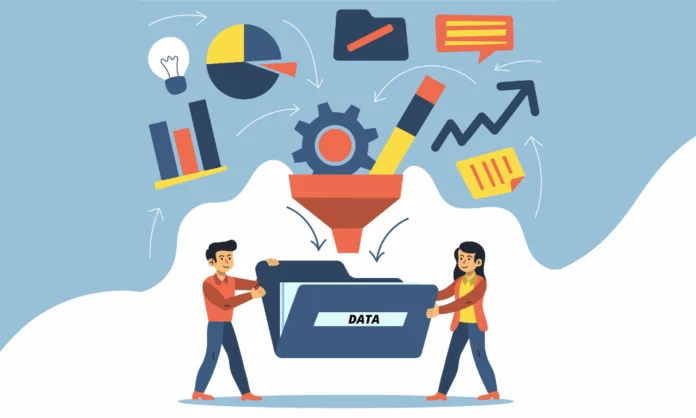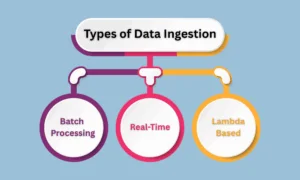Say you are operating a health-tech startup that provides virtual consultations and home patient monitoring. Here you collect vast amounts of information, appointment schedules, wearable device data, prescription histories, chat logs, are more.
Moreover, this data is dispersed across several systems such as electronic health records (EHRs), mobile apps, cloud databases, support requests, and third-party health APIs.
So, how do you bring all this information into one place? Alongside, you need actionable insights too! How to proceed with it?
Yes! Here is where data ingestion comes into picture. Data ingestion tools help collect and move data from multiple sources into centralized places like data warehouses, lakes, or business intelligence platforms, making it accessible for analysis and actionable insights.
In this blog, we’ll break down the top 6 data ingestion tools that will help you understand better.
What is Data Ingestion?
Data ingestion is the method wherein the data is first collected or say, imported from different sources and then stored into a centralized system so as to process and analyze it. Here the sources mean social media apps, ERP, CRM, SaaS apps and more similar kinds. The main motto of data ingestion is to make the data clean and worthy to perform business tasks efficiently. Thereafter, the data ingested can be stored in data warehouses, data lakes, data marts, etc.
It’s mainly divided into two types:
- Batch processing: bulk data intake on a regular basis.
- Real-time: ongoing consumption of data as it’s created.
- Lamda based data ingestion: processing vast amounts of real-time data.
A well-structured data ingestion process assures reliability and accuracy of data that’s ideal for businesses to perform their tasks best. Alongside, having the right data ingestion platform can help in better data availability, processing time, and analytical precision throughout your organization. That’s where we will talk about data ingestion tools that ensure that the data is regularly collected and made available for analysis and reporting from a variety of sources, including databases, APIs, and files.
Sharing the Best Benefits of Data Ingestion Tools
Browse through some of the best benefits of using data ingestion platform.
- Flexibility: Enables the processing of semi-structured, unstructured, and organized data in many formats.
- Accuracy: ensures data integrity and quality by managing and verifying schemas.
- Speed and Scalability: Ingest large volume of data
- Real-time Analytics: Receive real-time insights that enable quicker decision-making.
Top 6 Data Ingestion Tools To Consider
1. Estuary Flow
The first is Estuary Flow, a cloud-based and real-time data ingestion tool ideal for techie pros to novices alike. You don’t need a lot of coding knowledge to get started with this. Just a real-time sync between systems and minimum development efforts. It incorporates enterprise-grade governance, zero code pipelines, and CDC to improve data integration and business agility.
Key Features
- Native TypeScript support for data pipeline customization
- Transforms unstructured data into structured formats through the use of schema inference.
- 99.9% uptime for reliability
2. Talend
Talend is a low-code, flexible platform with thorough analytics and ingest data integration capabilities. It supports all the organization’s end-to-end data management requirements, from integration to delivery, while meeting all the security and compliance needs. Ideal for companies looking for an integrated solution that includes ETL, data governance, and low-code integration.
Key Features:
- Unified pipeline designer with drag-and-drop interface
- Data transformation and quality checks
- Stitch (self-service UI) to load data into cloud warehouses
3. Apache Kafka
Apache Kafka is an open-source distributed event streaming platform, used extensively for real-time ingestion and analytics. Apache Kafka makes sure data flows without error and streams events safely. You can merge, sum up, or change data. It links with many data hubs and works with many languages. It’s used by many people worldwide. It has strong support and a big open group to help. It’s key for big tasks.
Key Features:
- High-throughput data streaming at low latency
- Durable, fault-tolerant log storage
- Producers and consumers enable advanced messaging architectures
4. Hevo
Hevo is a popular no-code data pipeline platform that’s automated and have over 150 ready-to-use connections to databases, cloud storage, SDKs, streaming services, and SaaS apps, Hevo has a new-age UI and rapid setup—perfect for scaling businesses that desire to make data ingestion easy without significant dev investment.
Key Features:
- Fault-tolerant real-time replication of data
- Automated error handling and schema mapping
- Minimal setup through drag-and-drop UI
5. Dropbase
Dropbase is basically a platform that converts offline data into real-time, live databases. It facilitates teamwork on data projects and can ingest and process data from a range of sources, including CSV files and Excel spreadsheets. The amazing thing about Dropbox is, it takes care of everything, so you don’t need to worry about your own database.
Key Features:
- No need to manage the database system.
- Teams can work together on shared data pipelines.
- Drag and drop UI components for better experience.
6. Airbyte
Airbyte is an open-source data integration and ingestion platform with support for batch and real-time processing. If you’re looking for a customizable and affordable solution for rapid data pipeline deployment. With this, you can build an end-to-end data pipeline in minutes.
Key Features:
- 300+ pre-configured connectors for source/destination versatility
- Support for custom connectors
- Open-source and managed cloud deployment
- Data replication and scheduling
Over to You!
If you need to scale operations, drive AI models, or power data-driven decisions, these tools assist in centralizing and automating your data ingestion process.
Begin by determining your main use case, real-time streaming, batch analytics, or cloud-native ETL, and pick a tool that supports your business objectives.
Want to read such tech blogs? Visit here now.
Recommended For You:
Big Data Adoption Trends in 2024
Latest Data Storage Trends for 2024


